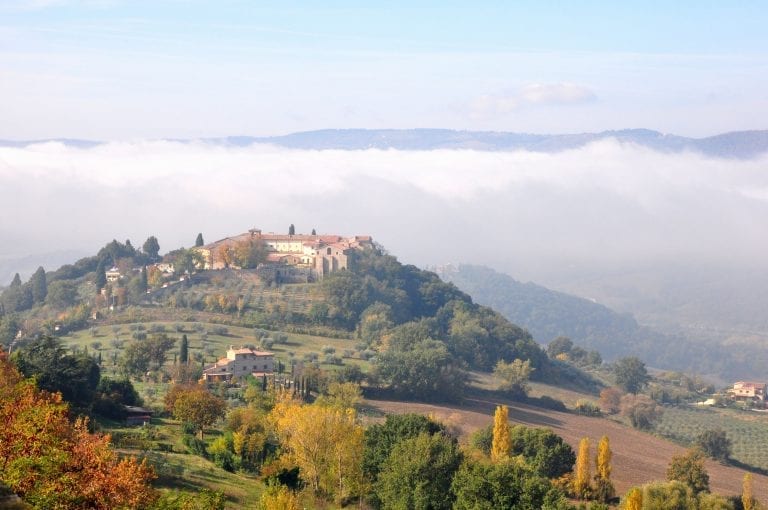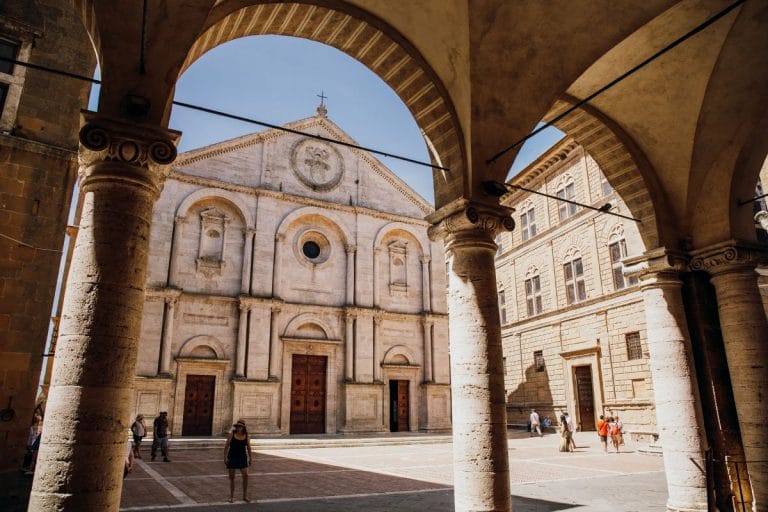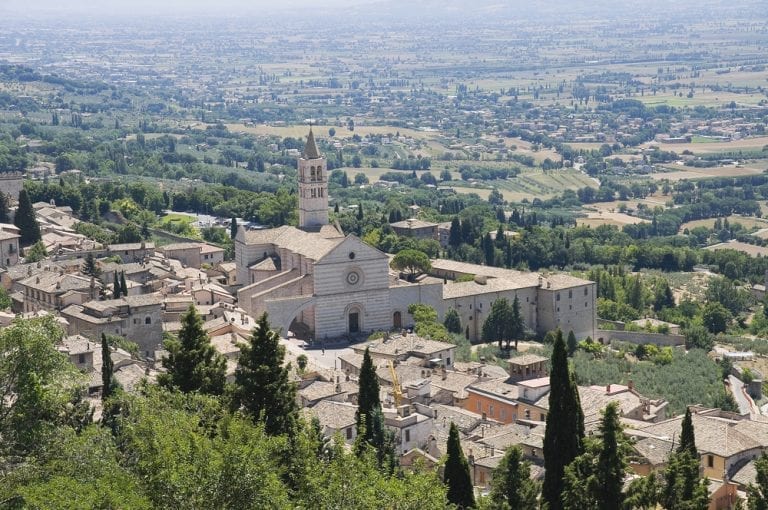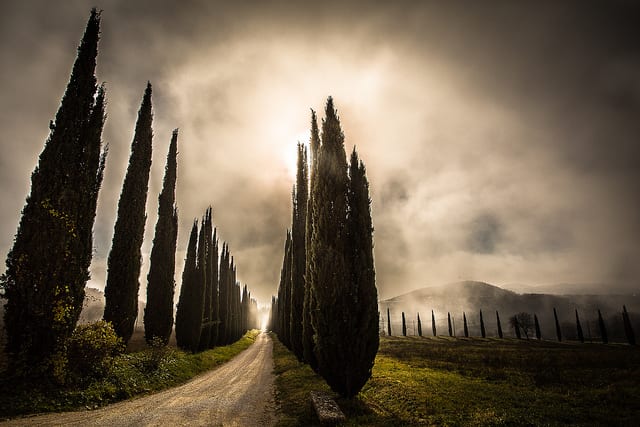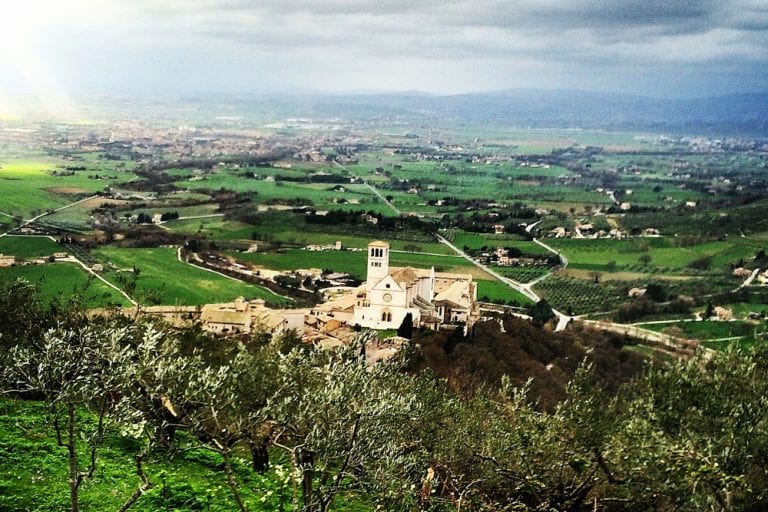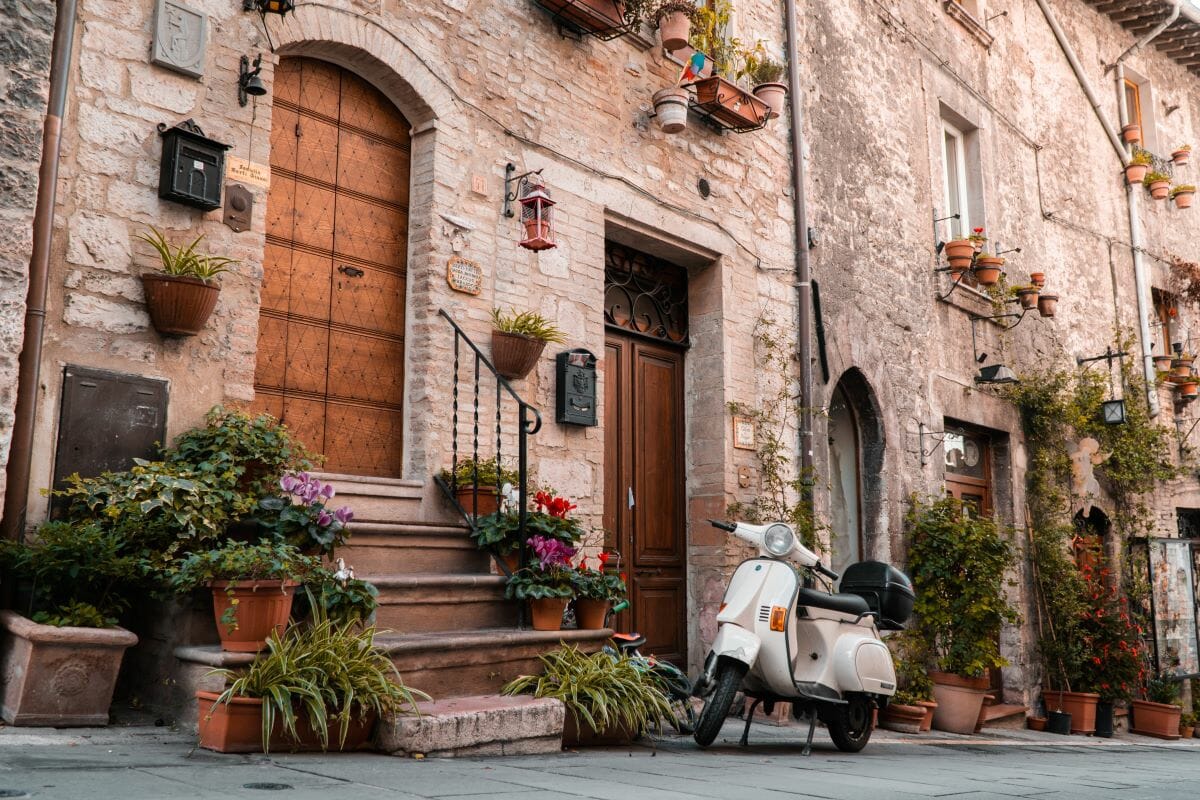
Assisi, Italy: 8 Top Attractions + Facts about This World Heritage Town
October 6, 2025
Assisi Italy isn’t just home to UNESCO World Heritage sites. It is a UNESCO World Heritage site.
Framed by the long, undulating hills of Umbria and the forests of Monte Subasio, Assisi is one of the best-preserved medieval towns in the world.
Read along for our guide on all things Assisi, from the town’s religious history to its must-see sites.
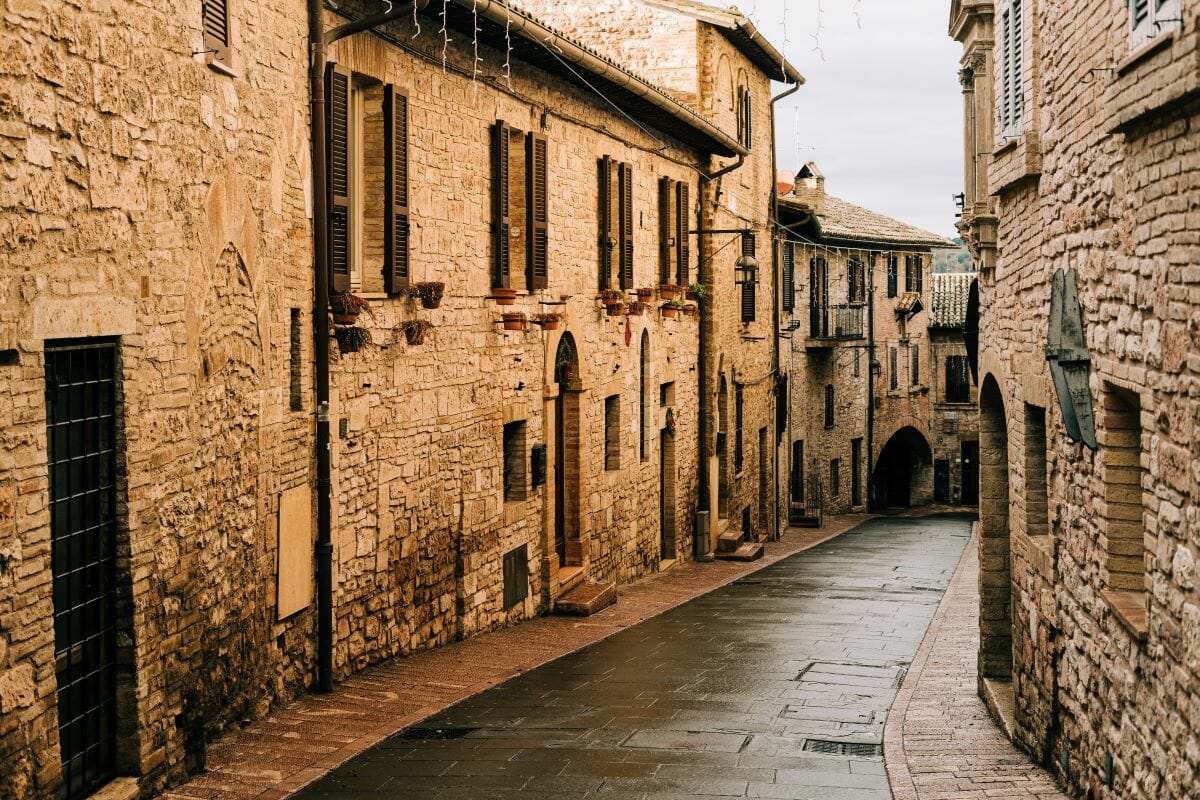
Assisi, Italy is a charming little city to get lost in. Photo credit: Gabriella Clare
As you can see in the photos, this captivating little town is recognized for its postcard-like charm, valuable art and historic buildings, such as the Basilica di San Francesco. Indeed, this basilica boasts a remarkable array of frescoes (murals) and paintings, rivalling art museums. The town is also significant for its role in spreading the Franciscan Order and its continuous city-sanctuary essence from its origins to the present day, as recognized by the UN.
Table of Contents
ToggleWhy is Assisi so religious?
As the birthplace of two of Catholicism’s most venerated saints and patron saints of Italy, Saint Francis of Assisi and Saint Catherine of Siena, Assisi, is a town with religion deeply intertwined in its essence. Visitors shouldn’t be surprised to see monks in long brown robes roaming the streets or bands of pilgrims walking the country roads surrounding the town.
Assisi’s religious impact extends to its twin cities, including Bethlehem and Santiago de Compostela. This town, known globally for peace, hosted significant interfaith meetings convened by Popes John Paul II and Benedict XVI. St. Clare, residing in Assisi Italy, was inspired by St. Francis and co-founded the Order of Poor Clares, a legacy that endures.
The town’s strong religious ties have influenced its history and art to the point where the three are inextricably linked. Local artisans craft religious figurines and the most valuable artistic works in the region are housed in Assisi’s many churches and Basilicas.
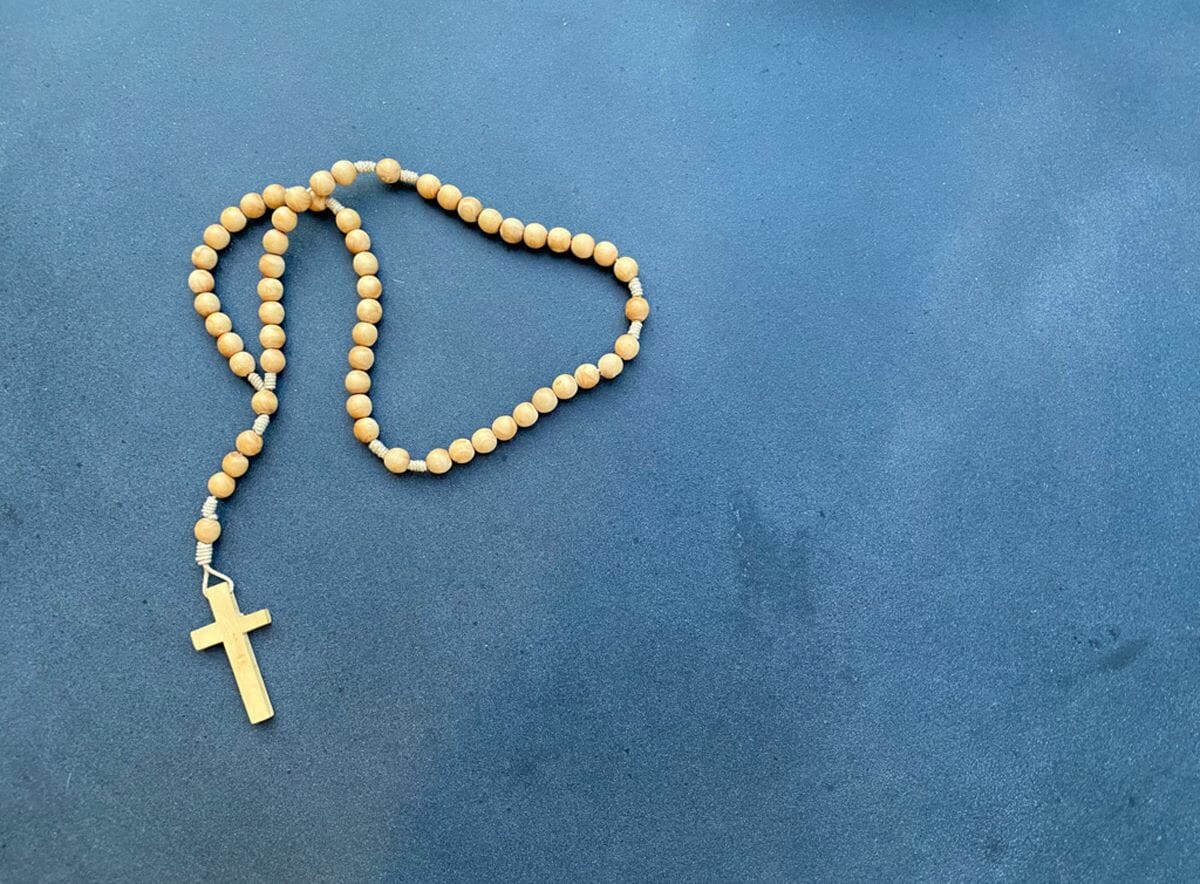
Assisi, Italy, is a place where religion is deeply woven into its core. Photo credit: S. Turby
Is Assisi a walkable city?
The historic center of Assisi Italy is small and easy to explore on foot. However, remember that it is located in hilly Umbria, near Monte Subasio, so be prepared with comfortable walking shoes as the cobblestone streets can be steep.
And while we are speaking of what to wear…take note: Since a huge part of visiting Assisi is stepping inside its many gorgeous churches, be sure to dress appropriately. You need to be respectfully dressed and cover up, even if it is the height of summer. Shorts that cover your knees and shirts that cover your shoulders are a must for both men and women.
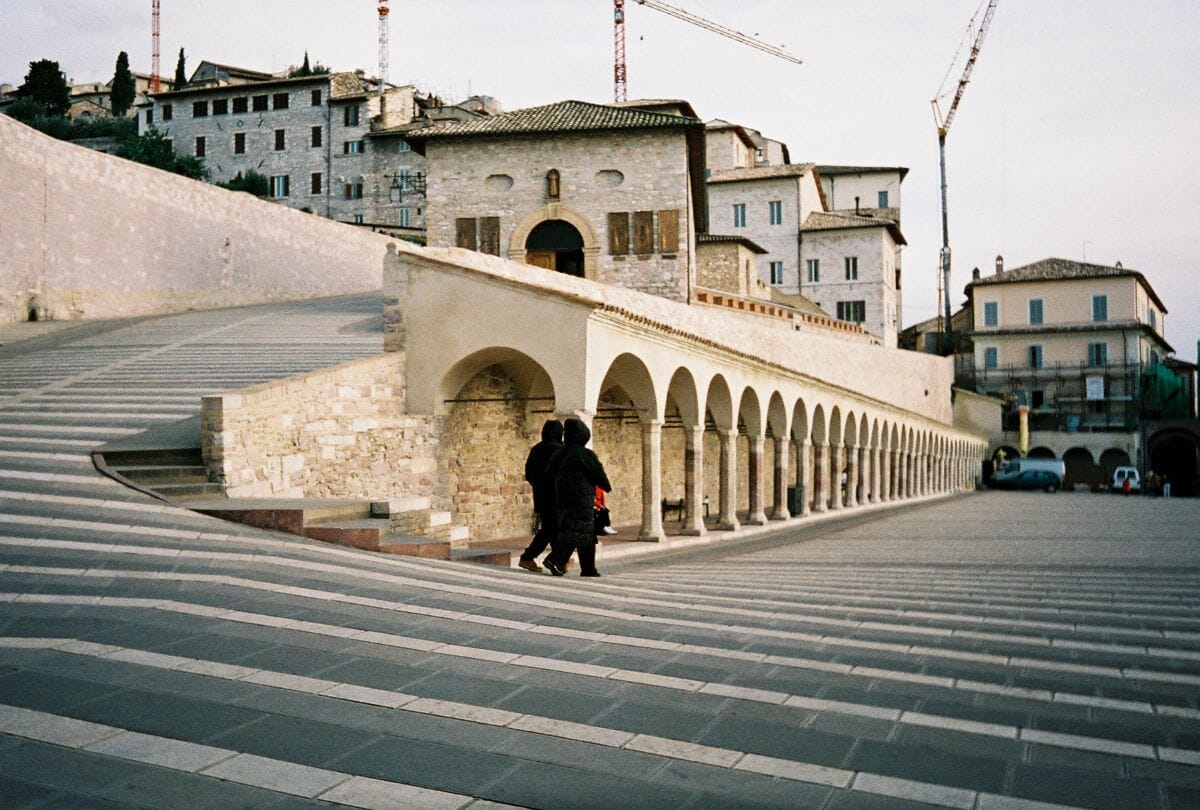
Assisi is hilly, but the views are fantastic. Photo credit: Chris Yunker
When should I visit Assisi?
While you can visit the city year-round, we recommend fall, winter, and spring due to more pleasant temperatures. Summers can be very hot, and that’s when the pilgrimage crowds peak. Thanks to its central Italian location, Assisi’s shoulder seasons are often warm and enjoyable, even when northern regions are still chilly.
Whenever you visit, it’s good to be aware of these yearly events. They offer fun opportunities for cultural immersion, but also note that the city might be more crowded, and accommodations could be pricier during these periods (you’ll see increased crowds, so it’s wise to book Assisi hotels well ahead!)
- Late March/early April: Easter, known as Semana Santa
- Early May: Calendimaggio, featuring medieval reenactments and festivities
- Late September/early October: March for Peace from Perugia to Assisi
- Early October: Feast day of St. Francis
- December: Christmas season! Expect nativity scenes all around town and the Nativity Scenes of the World exhibit. Don’t miss the grand nativity scene in front of the Basilica of St. Francis and explore Christmas Markets in early December filled with crafts and delicious food in the main square and Piazza Santa Chiara.
What is the recommended duration of a trip to Assisi?
Though you could tour the city center in just an afternoon, we’d recommend at least a full day or an overnight stay to soak in the atmosphere. Spending the night allows you to enjoy the peaceful evening atmosphere once the day-trippers leave and to experience sunrise views from the upper town. A 2-day stay is perfect for exploring the main basilicas, wandering the medieval streets, and enjoying Umbrian food at local trattorias.
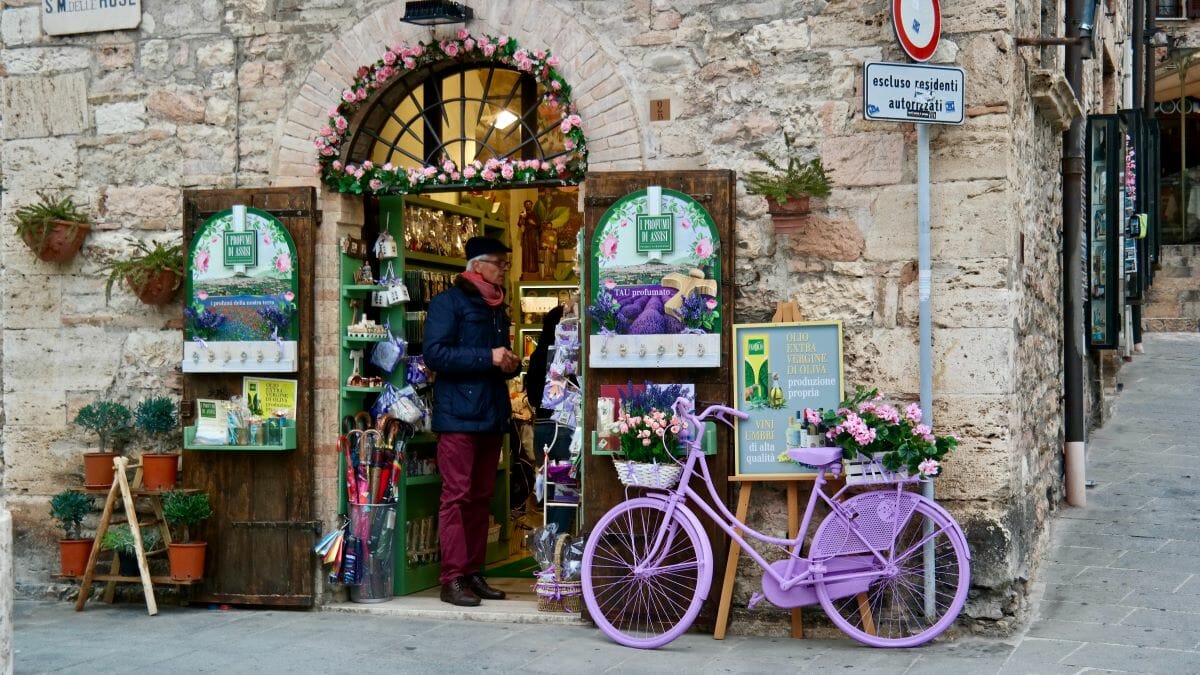
No matter the season, visiting Assisi is a fantastic idea. Photo credit: Alessio Roversi
What Are the Top Attractions in Assisi?
Rocca Maggiore
The Rocca Maggiore is a large castle in Assisi, perched on the highest point.
It was built in the 14th century and serves as a great starting point for sightseeing since everything is downhill from there. From the castle, visitors can enjoy panoramic views of Perugia to the North, the town of Assisi below, and the surrounding valleys.
The castle was constructed by Cardinal Albornoz to intimidate the townspeople and has undergone multiple expansions, lootings, and renovations over the centuries. Legend also has it that the formidable Holy Roman Emperor, Frederick I (Barbarossa), spent his early years here.
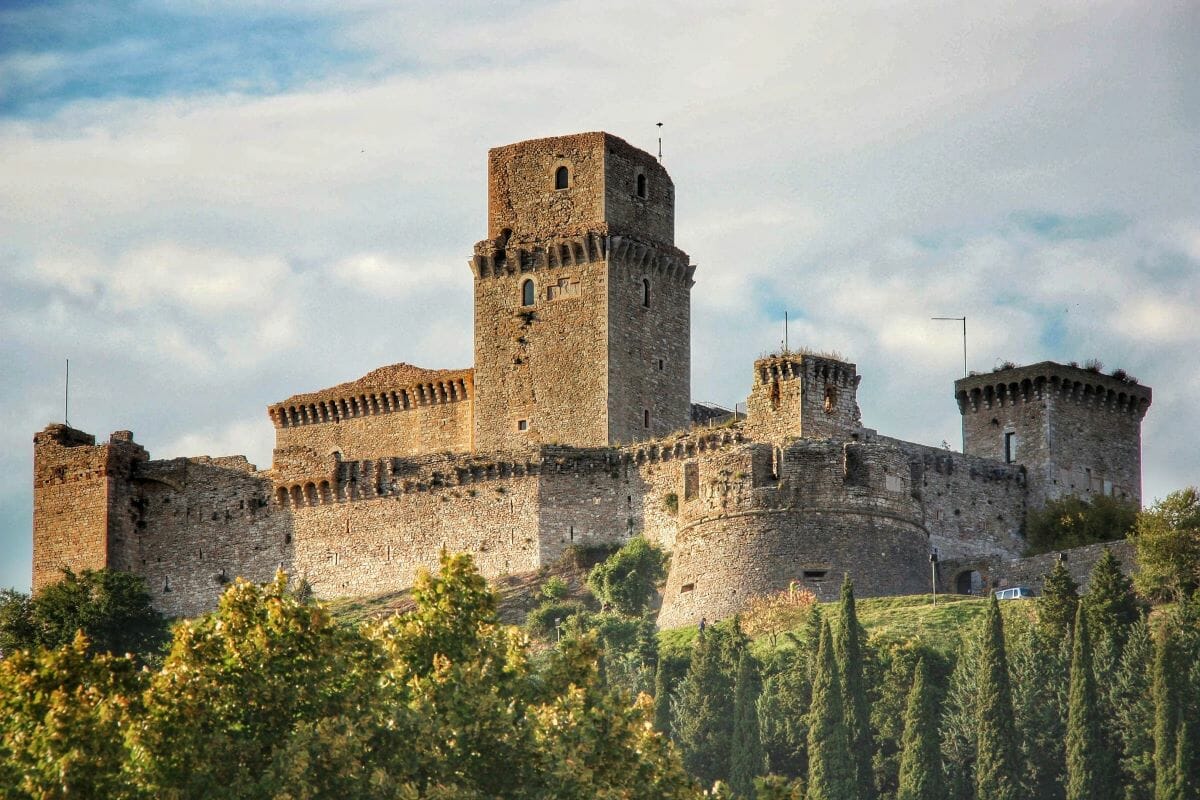
Rocca Maggiore offers stunning panoramic views. Photo credit: Davide Terragni
Basilica of St. Francis
Assisi’s main attraction is the Basilica of St. Francis, an impressive structure visible from afar. Its construction began in 1228 after St. Francis’ death, completing in 1253 with an upper church added. Divided into upper and lower parts, both feature captivating frescoes.
The upper church showcases Giotto’s 28 vivid frescoes depicting St. Francis’ life. The lower church holds works by Cimabue, Lorenzetti, and Martini, reflecting Giotto’s influence. The lower sanctuary houses St. Francis’ monumental tomb.
Interesting fact: St. Francis’ remains were hidden after his death to prevent theft. Rediscovered in 1818, they remain intact, a rare feat among saintly skeletons.
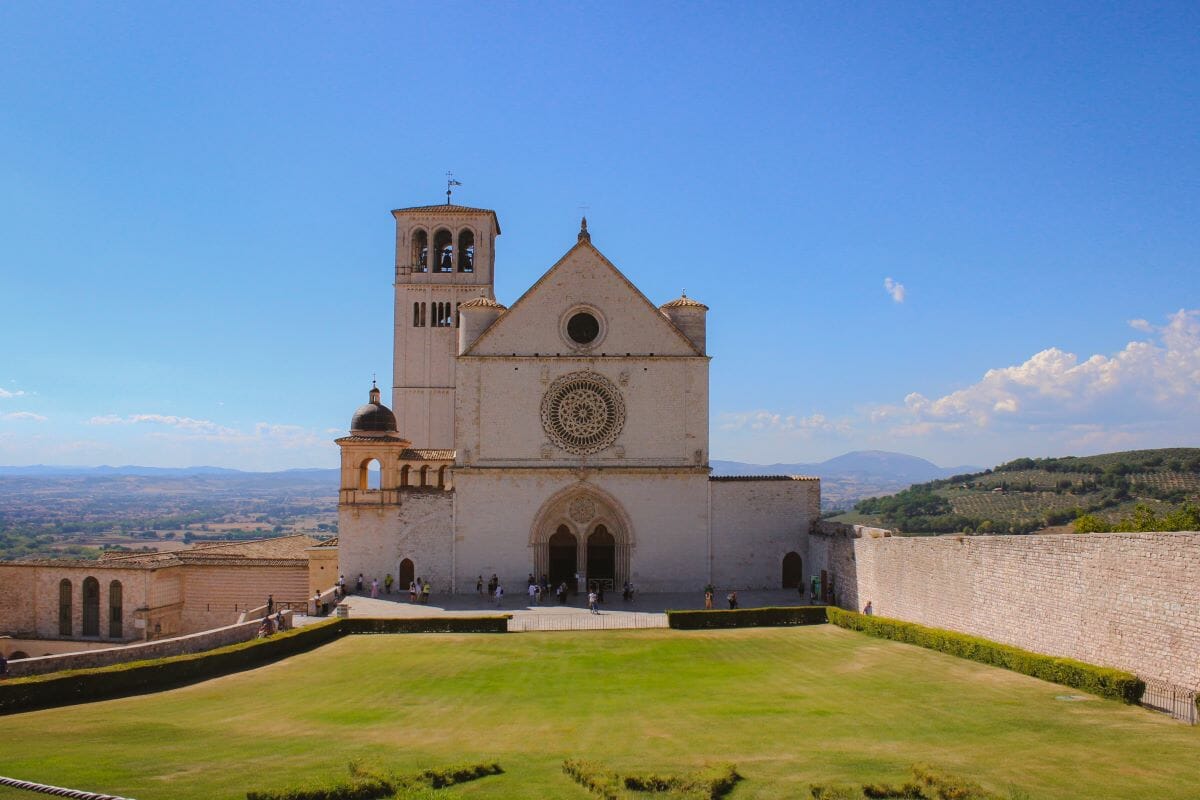
Assisi is one of the most charming little cities in Italy. Photo credit: Mattia Poli
Duomo di San Rufino
The San Rufino Cathedral, or simply Assisi Cathedral, is a favorite spot among pilgrims in Italy due to its connection to St. Francis’ life. It has a beautiful, Romanesque façade featuring three rose windows. Built atop an old Roman cistern in the 13th-century, the remodeled interior is primarily from the 16th century.
Here you’ll find the fountain where both St. Francis and St. Clare were baptized. The Cathedral was dedicated to San Rufino, or St. Rufinus, after he converted Assisi to Christianity in AD 238 and was later martyred. It’s said that his remains still rest in a Roman sarcophagus in the cathedral.
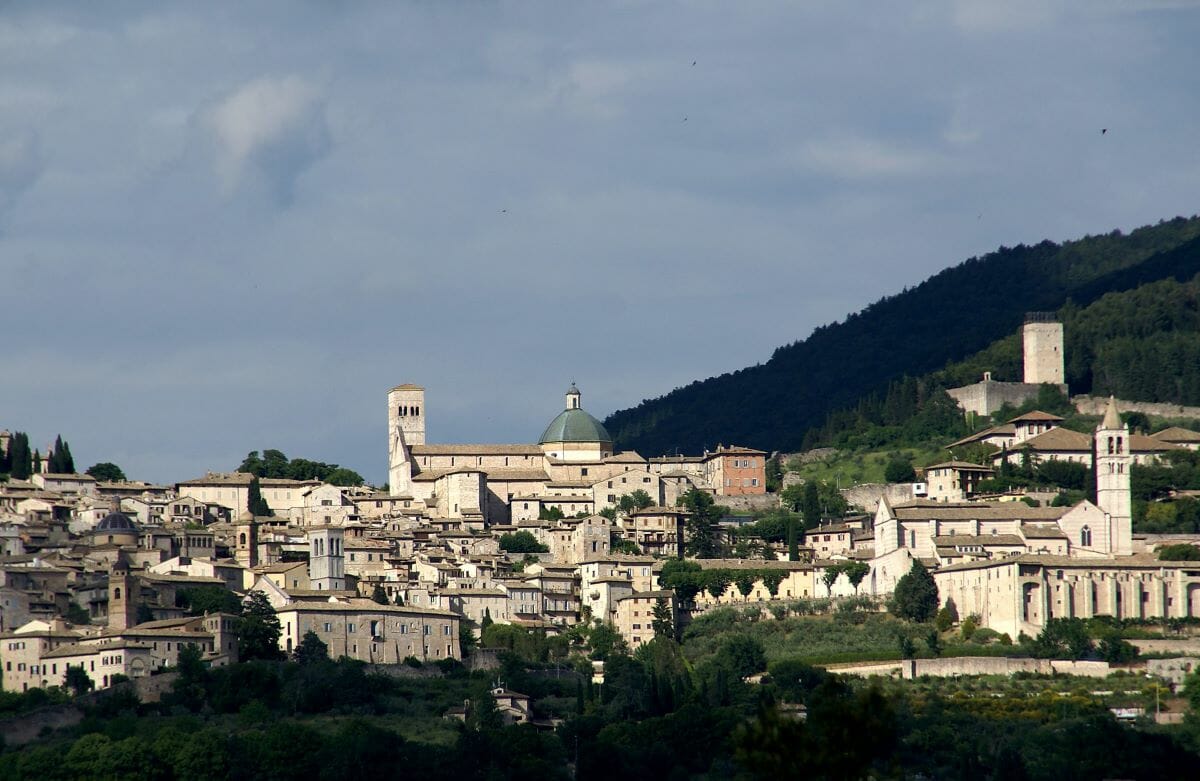
The Assisi Cathedral is a must-visit when exploring the town. Photo credit: HEN-Magonza
Santa Maria Sopra Minerva
Not to be confused with the church of the same name in Rome, this church is built inside a converted 1st century BC temple once dedicated to the Roman goddess of wisdom, Minerva.
Amid all the medieval and Renaissance buildings, its towering Corinthian columns are a stark reminder of the power and beauty of Roman imperial architecture. When early Christians converted the temple they bestowed on it the name of the powerful Virgin Mary, a saint who could neutralize any lingering pagan power and influence.
This building was one of Goethe’s first stops during his celebrated journey through Italy and remained a particular favorite. The temple of Minerva may look Roman from the outside but the interior was completely remodeled in the 16th century and is a stark contrast to the Cathedral’s ancient past.
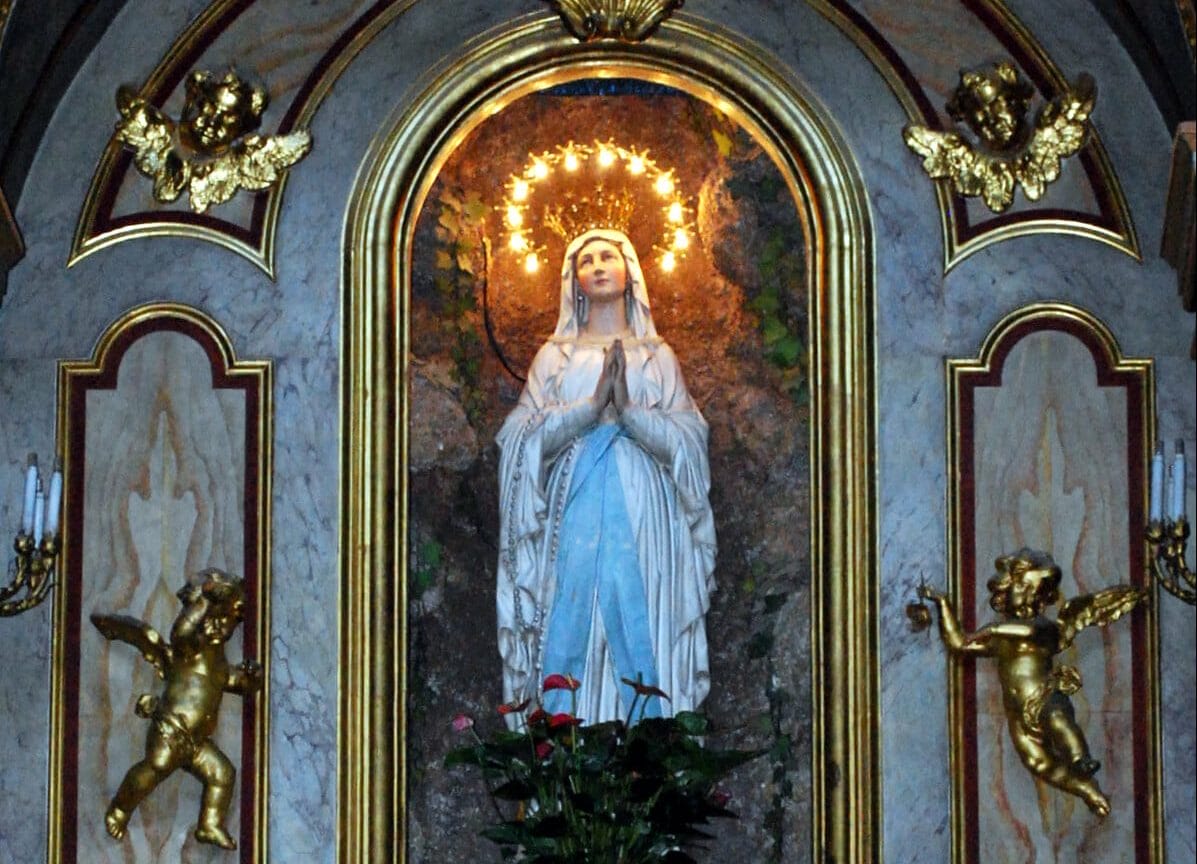
Don’t confuse the Santa Maria Sopra Minerva of Assisi with the one in Rome. Photo credit: Marco
Santa Maria degli Angeli
St. Mary of the Angels is a 16th-century church, found about 2.5 miles downhill from Assisi, close to the train station. This Basilica is renowned for containing the Porziuncola, a small stone building believed to be the dwelling of St. Francis and his followers. Nowadays, the Porziuncola is situated inside Santa Maria degli Angeli. This modest church is thought to be where St. Francis established the Franciscan order and passed away around October 3, 1226. A significant site for pilgrims and those intrigued by Catholic relic history.
Interesting fact: The Porziuncola isn’t the only instance of a building within a building in the possession of the Catholic Church. The Holy House of Loreto, transported with effort from Jerusalem to Italy, is also considered the Virgin Mary’s dwelling and serves as a prominent pilgrimage destination, much like the Porziuncola.
San Damiano Church
San Damiano is a small church outside Assisi’s walls. Legend says St. Francis heard God’s voice here, urging him to “rebuild the church.” He penned his renowned Canticle of the Creatures here, praising nature and animals in an Umbrian dialect. Around a mile southeast of the city center, it offers a pleasant walk through fields and olive trees, plus picturesque views of the Valley of Spoleto.
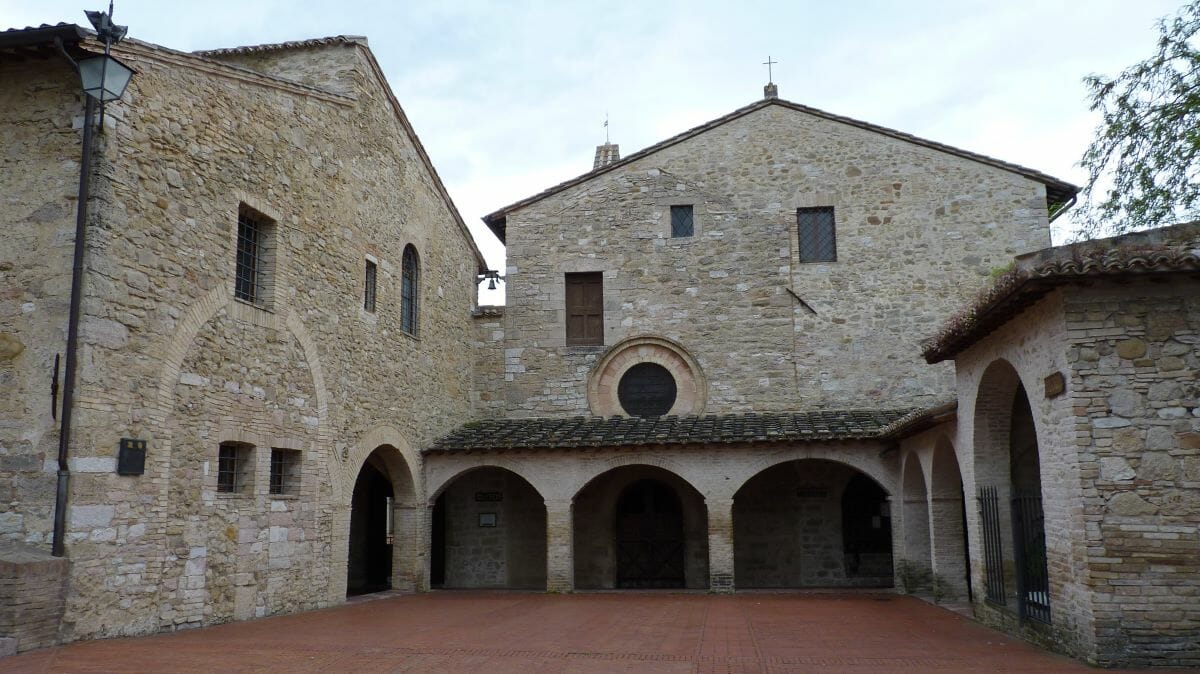
San Damiano Church is small, but still worth the visit. Photo credit: Damian Entwistle
Chiesa Nuova
Near to the Piazza del Comune, Assisi’s central piazza, Chiesa Nuova supposedly sits atop the childhood home of St. Francis. Built by King Philip III of Spain in the 1600s, a bronze statue of St. Francis’ parents sits outside to honor their home.
Basilica di Santa Chiara
St. Clare, a significant figure in Catholic history, lived during St. Francis’ time and established the Poor Clares Order. Her resting place is in the crypt of the 13th-century Church. Don’t miss the stunning pink and white facade, along with the San Damiano Crucifix, the symbol St. Francis prayed during his spiritual revelation.
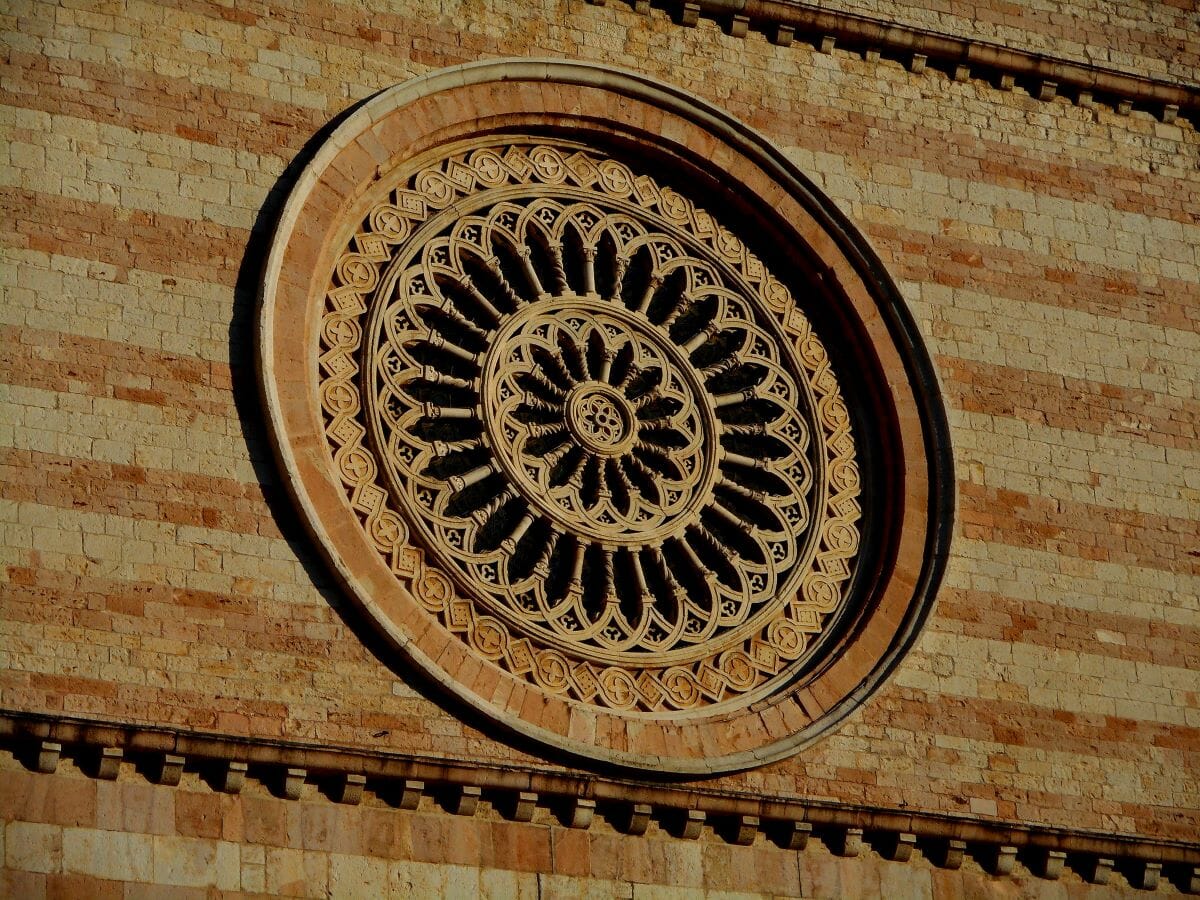
The details on the Basilica di Santa Chiara are simply stunning. Photo credit: Carlo Raso
Are there Local Artisans in Assisi?
Artisan traditions in Assisi Italy thrive with local crafts, from ceramics to weaponry (just like many other places across the country).
- Umbrian cured meats and chocolate are among the most coveted of Umbria’s regional delights The best chocolate in Assisi is made in the nearby Perugina chocolate factory (Casa del Cioccolato) and is renowned across Italy, so if you have a sweet tooth, definitely check it out!
- For wearable items, gold or silver Tau cross necklaces symbolize St. Francis and Assisi also offers quality leather goods like belts, shoes, and jackets.
- If you’re in the mood for something kitschy, look out for a St. Francis bobblehead.
Insider’s tip: If buying cured meats, look for packages labeled “Norcia“, which is a town about an hour away that is considered the birthplace of pork curing in Italy. Guanciale and coppa from Norcia are particular favorites.
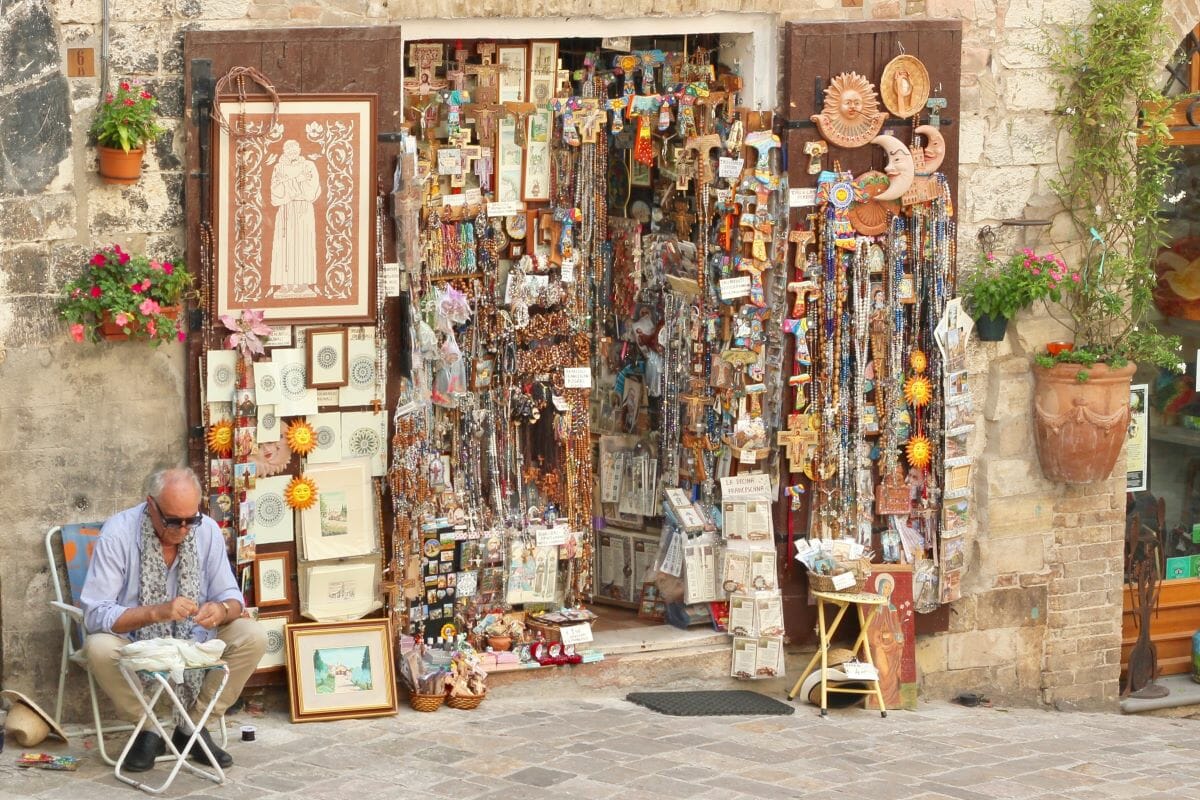
The most unique souvenir you’ll find in Assisi? A bobble head of St. Francis. Photo credit: David Tip
FAQ´S for making trips to Assisi Italy
How much does it cost to visit Assisi’s main attractions?
Most churches in Assisi, including the Basilica di San Francesco, are free to enter, though donations are appreciated. However, some areas—like the Basilica’s museum or guided tours of the Rocca Maggiore castle—require a small admission fee (usually around €2–€8). If you plan to visit multiple sites, consider setting aside around €15–€20 for entry tickets in total.
Are there any restrictions for visitors to Assisi’s churches?
Yes. As mentioned earlier, modest and respectful dress is required when entering religious buildings—shoulders and knees must be covered for both men and women. Photography may also be restricted inside certain churches (like the Basilica di San Francesco) to protect the delicate frescoes. Silence is also encouraged, as these spaces are active places of worship.
How do I get to Assisi and get around once I’m there?
Assisi is easily reachable by train from Rome or Florence, usually with a quick connection in Perugia or Foligno. The journey takes about 2–2.5 hours from Rome and around 2.5–3 hours from Florence. The train station is located at Santa Maria degli Angeli, about 3 km downhill from the historic center. From there, you can take a local bus, taxi, or even walk uphill if you’re feeling energetic.
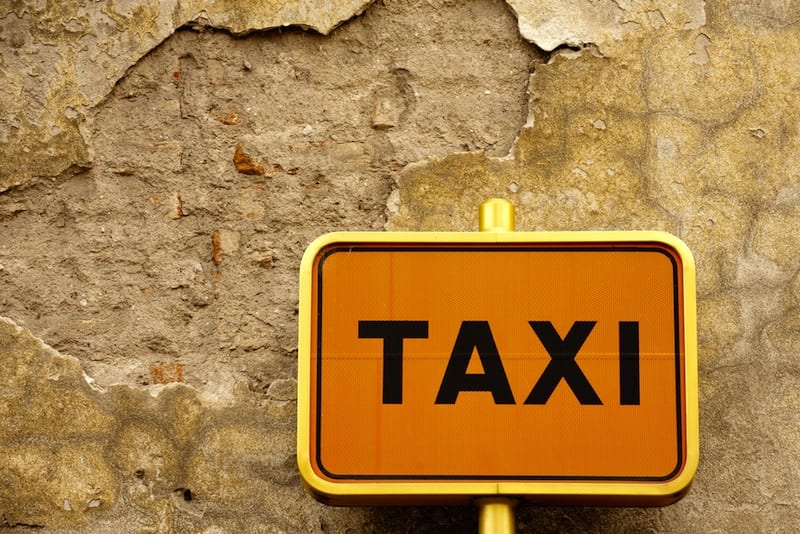
If you found our insiders’ guide to Assisi helpful, check out our other great guides: the Vatican City Guide, and the Trieste City Guide. And if this has wet your appetite for seeing some of the world´s most prestigious religious art and artefacts, you can explore the Vatican’s breathtaking frescoes up close on a Complete Vatican Tour. Marvel at Michelangelo’s ceiling, Raphael’s Rooms, and Italian art that has changed the world.
by Gina Mussio
View more by Gina ›Book a Tour

Pristine Sistine - The Chapel at its Best
€89
1794 reviews

Premium Colosseum Tour with Roman Forum Palatine Hill
€56
850 reviews

Pasta-Making Class: Cook, Dine Drink Wine with a Local Chef
€64
121 reviews

Crypts, Bones Catacombs: Underground Tour of Rome
€69
401 reviews

VIP Doge's Palace Secret Passages Tour
€79
18 reviews

Legendary Venice: St. Mark's Basilica, Terrace Doge's Palace
€69
286 reviews










